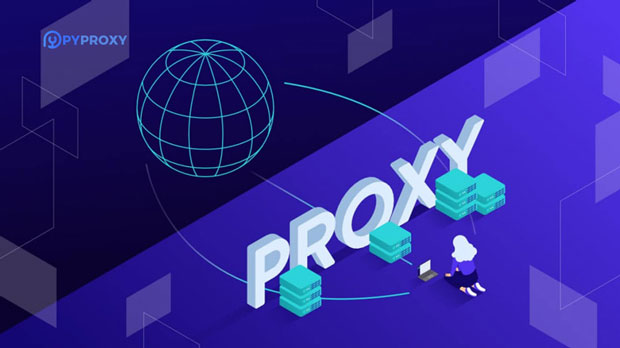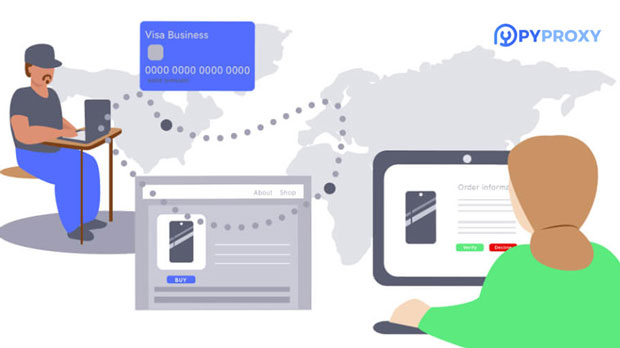When considering proxies, it's essential to understand the key differences between Plainproxies and free proxy services. While both options offer anonymity and access to blocked content, they vary significantly in terms of performance, security, reliability, and service quality. Plainproxies typically come with a range of premium features, including faster speeds, better security, and dedicated customer support. On the other hand, free proxy services often come with limitations, such as slower speeds, unreliable connections, and potential privacy risks. In this article, we will explore these differences in depth to help you make an informed decision on which type of proxy service suits your needs. 1. Introduction to Proxy ServicesA proxy server acts as an intermediary between a user's device and the internet, allowing users to mask their IP addresses, enhance security, and access geographically restricted content. Both Plainproxies and free proxy services offer these benefits, but they come with significant distinctions in terms of service quality and additional features. The choice between these two types of proxies depends on the user's needs, such as privacy, speed, and reliability.2. Speed and PerformanceOne of the most noticeable differences between Plainproxies and free proxy services is speed and performance. Plainproxies: Premium proxy services like Plainproxies often provide faster speeds due to dedicated servers and fewer users sharing the same IP address. Since these services are paid, the provider can invest in high-performance hardware and infrastructure to ensure that users experience minimal lag and faster connection speeds, which is essential for activities such as streaming, online gaming, or web scraping.Free Proxy Services: On the other hand, free proxy services typically have slower speeds. Since they are offered at no cost, free proxy providers rely on shared server resources, meaning many users access the same IP address. This can cause congestion, leading to slower speeds and less reliable performance. Moreover, free proxies often lack the advanced infrastructure needed to maintain consistent and high-speed connections, resulting in frequent disconnections and lag.3. Security and PrivacyAnother crucial factor when comparing Plainproxies and free proxy services is security and privacy.Plainproxies: Plainproxies generally offer a higher level of security. They are more likely to implement advanced encryption protocols, ensuring that your data is securely transmitted. Furthermore, paid proxy services have stricter privacy policies and are less likely to log your activity or sell your data to third parties. This makes them a safer choice for individuals or businesses that value privacy and want to protect sensitive information.Free Proxy Services: Free proxies, however, pose significant risks when it comes to security. Many free proxy providers lack strong encryption measures, leaving users vulnerable to potential data breaches or cyberattacks. Furthermore, some free proxies may track and log your internet activity, which can compromise your privacy. Since free proxies are often not as transparent about their data handling practices, users may inadvertently expose themselves to data mining or identity theft.4. Reliability and UptimeReliability and uptime are essential for ensuring that users can consistently access the internet without interruptions. Plainproxies: Since Plainproxies are premium services, they tend to offer higher reliability. They have dedicated customer support teams available to resolve any issues quickly and ensure that their services remain functional. Additionally, paid services typically invest in robust server infrastructure and backup systems, reducing the chances of downtime. This makes Plainproxies a more dependable option for users who require uninterrupted access to the internet.Free Proxy Services: Free proxies, however, are generally less reliable. They often have frequent downtimes due to underfunded infrastructure and insufficient resources. Since these services are free, the providers are less incentivized to maintain them. As a result, users may experience frequent interruptions or downtime, which can be frustrating, especially if they rely on proxies for business operations or personal browsing.5. Customer Support and AssistanceCustomer support is a significant factor that sets Plainproxies apart from free proxy services.Plainproxies: Paid proxy services like Plainproxies offer dedicated customer support. If users face issues, they can reach out to the support team through multiple channels, such as live chat, email, or phone. This level of customer care ensures that users receive timely help, making the experience smoother and more efficient. Furthermore, many paid proxy providers offer technical assistance to troubleshoot any problems that may arise.Free Proxy Services: In contrast, free proxy services typically offer limited or no customer support. If users experience issues with the proxy, they are often left to resolve them on their own. Some free proxy providers may offer community forums or FAQ pages, but these resources may not always address specific problems effectively. As a result, users who encounter issues may have to rely on external forums or third-party websites for help.6. Customization and FeaturesWhen it comes to features and customization, Plainproxies typically offer more options compared to free proxy services.Plainproxies: Plainproxies often allow users to select specific features, such as dedicated IP addresses, sock s5 proxies, and specialized proxy locations. This level of customization is valuable for businesses or individuals who require a tailored proxy solution to meet specific needs. Premium services also offer more advanced features, such as automatic IP rotation, higher bandwidth limits, and additional security options.Free Proxy Services: Free proxies usually come with limited features and customization options. Users often cannot choose the location of their proxy servers or select specific proxy types. Additionally, free proxy services may impose strict bandwidth limits, slow speeds, and restricted access to certain websites. This lack of flexibility can make free proxies unsuitable for users with specialized needs.7. Use Cases and ApplicationsThe choice between Plainproxies and free proxies also depends on the user's intended use.Plainproxies: Plainproxies are best suited for individuals or businesses that need reliable, fast, and secure proxy services. They are ideal for tasks such as online business, web scraping, accessing geo-blocked content, and ensuring anonymity during browsing. Since these services are paid, users can rely on them for high-performance tasks and sensitive operations without worrying about security breaches or performance issues.Free Proxy Services: Free proxy services are more suitable for casual users who need basic anonymity or want to access geo-blocked content without worrying too much about speed or security. They are not ideal for tasks that require high reliability, such as streaming or web scraping. Free proxies are better suited for short-term or occasional use, where privacy and speed are less of a concern.8. ConclusionIn conclusion, the decision between Plainproxies and free proxy services largely depends on your specific needs. Plainproxies offer faster speeds, better security, greater reliability, and more customization options, making them ideal for users who require high-performance proxy services. Free proxies, while free of charge, come with limitations such as slower speeds, less security, and fewer features, making them better suited for casual use. If privacy, speed, and reliability are important to you, opting for a paid service like Plainproxies will provide a more secure and efficient experience.
Jul 04, 2025



































































